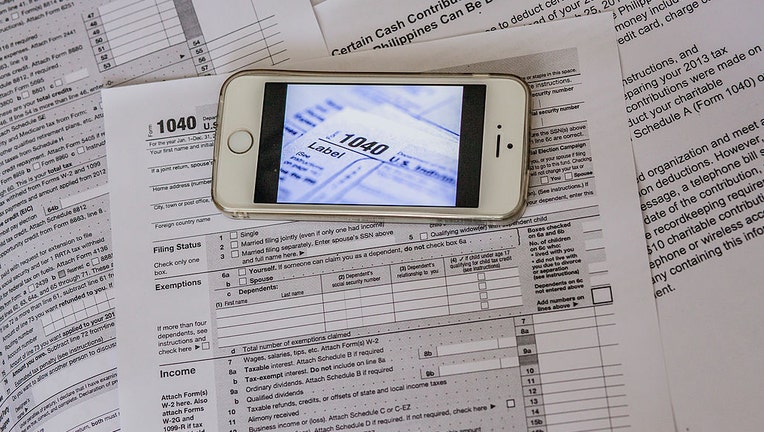IRS outlines what you need to know to prepare for tax filing in 2023

FILE-An image of a 1040 tax form. (Getty Images)
Tax season will be here before we know it, and if you’re working on gathering documents in advance, the IRS has updated its website with information to make the filing process easier.
The tax filing deadline is April 18, 2023, and here’s what you need to know.
Gathering 2022 tax documents
Gathering paperwork can be a hassle but the IRS suggests setting up a records system to keep your tax documents organized.
These 2022 documents include W-2 forms from employers, 1099 forms from banks or other payers, and 1099-K forms from third-party payment entities.
RELATED: Still missing your tax refund? The IRS will soon pay you 7% interest
The IRS says creating an online account on their site lets filers securely access their personal tax information. You can do this by logging in and verifying your name and address. The agency notes that people should notify them if their address has changed and contact the Social Security Administration if they have a legal name change to avoid a delay in processing a return.
What can I do to avoid tax refund delays?
It’s important for individuals to complete their tax records before filing their returns to prevent refund delays.
Most refunds are issued in less than 21 days, but the IRS explains that filers shouldn’t rely on getting their refund on a specific date. According to the IRS, some tax returns may require more review and can take longer to process if the agency finds an error, the return is missing information, or if there is identity theft or fraud.
The IRS notes that they can’t provide refunds for people claiming an earned income tax credit or additional child tax credit before mid-February.
An earned income tax credit helps low- to moderate-income workers and families get a tax break. According to the IRS, if a person qualifies, they can use the credit to reduce the taxes they owe while possibly increasing the amount of the refund.
A child tax credit helps families with qualifying children get a tax break. According to the IRS, an individual may be able to claim the credit even if they don't normally file a tax return.
Additionally, the IRS says they must hold the entire refund, not just the portion, with the earned income tax credit or additional child tax credit.
Set up direct deposit to get your refund faster
Once you file your taxes, the quickest way to get your return is through direct deposit. This method avoids the hassle of waiting to receive your refund check by mail. Plus, it minimizes the chances of it being lost or stolen or returned to the IRS as undeliverable.
According to the IRS, prepaid debit cards or mobile apps may allow a direct deposit of tax refunds but a routing and accounting number must be associated with it. The IRS notes that tax filers can contact the mobile app provider or financial institution to confirm which numbers to use.
Reporting rules changed for 1099-K form
Taxpayers should receive Form 1099-K, Payment Card and Third Party Network Transactions by January 31, 2023, if they received third-party payments in the tax year 2022 for goods and services of more than $600, according to the IRS.
There's no change to the taxability of income. All income, including from part-time work, side jobs or the sale of goods is still taxable. Taxpayers must report all income on their tax return unless it's excluded by law, whether they receive a Form 1099-K, a Form 1099-NEC, Nonemployee Compensation, or any other information return.
RELATED: IRS adds new webpage to prep for tax season
A single transaction of more than $600 could require the third-party platform to issue a 1099-K. Money received through third-party payment networks from friends and relatives as personal gifts or reimbursements for personal expenses is not taxable, according to the IRS.
The IRS explains that if the person filing has untaxed income on a Form 1099 that isn't reflected on the tax return they initially filed, that could mean they need to submit a tax payment with an amended tax return.
Some tax credits going back to 2019 levels
With some tax credits going back to 2019 levels, the IRS explains that taxpayers impacted by this will likely get a smaller refund compared to last year.
These changes will be reflected in the amounts for the child tax credit, earned income tax credit, and the child and dependent care credit.
According to the IRS, individuals who received $3,600 per dependent in 2021 for a child tax credit, if they’re eligible, would get $2,000 for the 2022 tax year.
Under the earned income tax credit, eligible taxpayers without kids who received $1,500 in 2021 will now get $500 in 2022, the IRS explains. Additionally, the child and dependent care credit returns to a maximum of $2,100 in 2022 instead of $8,000 in 2021. For more information, visit IRS.gov.
This story was reported from Washington, D.C.

